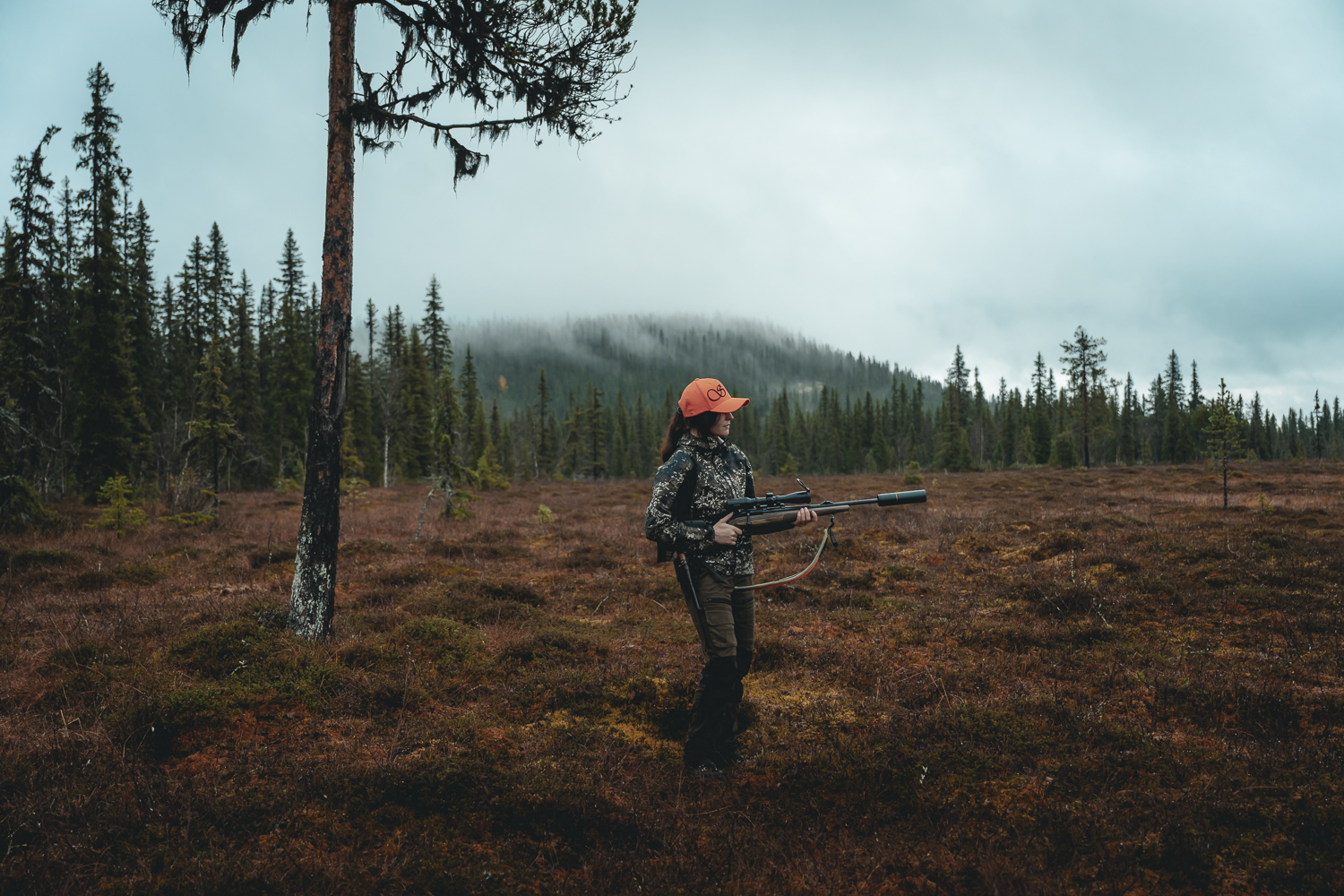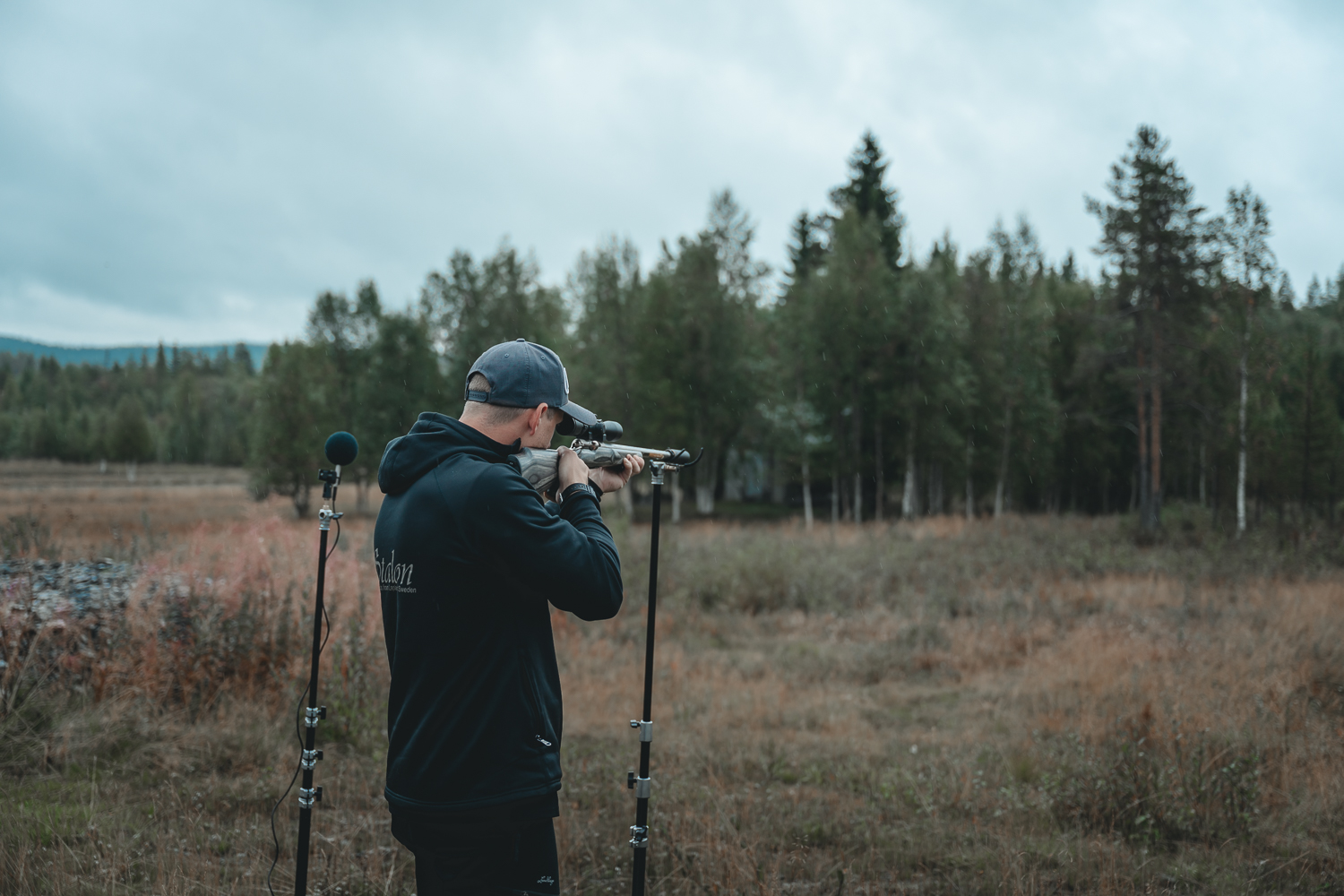What is noise, and how do we measure it?
MIL-STD-1474D, the sturdy shortening that we shorten even more to MIL standard. Military Standard - well, call it what you will - is the current standard for measuring noise levels from guns and/or silencers. This standard specifies the exact procedure and how to perform the test to get a precise and honest result. We use MIL-STD-1474D for all of our sound measurements according to the standard, and by that, we can present a correct result from our silencer's noise measurements.

WHAT NOISE CAN A SILENCER REDUCE?
Measuring the sound levels, or noise levels, from firearms equipped with a silencer require extensive experience and knowledge. The typical sound or noise from a firearm is generated from two things. The first one is a sudden release of hot, high-pressure propelling gases in the bore, and the other is the sound of the bullet in flight (sonic boom).
The noise from the sonic boom, or the projectile that’s shot, is generated at a far distance outside of a firearm and/or outside of a firearm equipped with a silencer, and cannot be addressed by the silencer. The sound from the bullet's supersonic speed (sonic boom) or when the bullet hits something has a higher noise level than many expect. This can be illustrated when shooting in an open field compared to shooting in a deep forest, where the sound will bounce back with higher force than in the open field. The noise generated from the release of hot, high-pressure gases are gases from the actual gunpowder explosion. These gases have extremely high pressure and create an impulse sound when leaving the bore/barrel, and will quickly expand to the pressure that’s in our ambient air. This gas can be reduced by certain techniques in a silencer, by slowing down and reducing the pressure on the gases before released out into the atmosphere (ambient air).



HAVING A RELIABLE RESULT
The current standard or the commonly used standard for measuring noise levels from firearms is MIL-STD-1474D. Stalon AB uses this method for all noise measurements with an exact setup according to the terms of the standard. This is a very important procedure to be able to present a precise and accurate result of noise reduction of the Stalon silencers.
MIL-STD-1474D specifies the exact procedure and how to perform the test, including sound level meter type, microphone positions, operator positions, surroundings, etc. It indicates central values to implement a correct measurement and have a reliable and continuous result.
Something important to understand when discussing noise reduction and comparing silencers is how the actual noise measurement was executed and why. We measure noise levels accordingly with the current standard, which we name MIL-standard in-house (read more here). This standard specifies the exact positions for every module and technical equipment that should be used in the test. Noise is measured with a sound level meter positioned 100 centimeters and 90 degrees to the left from the bore exit of the silencer. If you like, you can add a reference position at ”shooter’s ear,” which will make the result about 8-10 dBc lower. E.g.; Stalon VICTOR reduces noise down to about 141 dBc according to MIL-standard (.308w), but would show 132 dBc measured at "shooter’s ear”. XE149 reduces noise to 132,5 dBc at bore-exit but would show 123,5 at ”shooter’s ear”.
Measuring at ”shooter’s ear” becomes a problem for several reasons. Besides the silencer's ability to reduce noise, the space between the meter at ”shooter’s ear” and the silencer’s muzzle will affect the result significantly. Play with the thought of having a silencer that’s very short, but efficient, tested with a short barrel. This silencer will be compared against a silencer that’s much longer, and not as efficient as the other, and will also be tested with a longer barrel. Both results will be misleading since the space between the meter and muzzle differ between the two tests - maybe even a couple of decimeters. The result might even show that the longer silencer that’s less efficient has a lower noise level than the one with better performance.
What’s discussed above will cause different experiences for different shooters. The choice of caliber is the main affecting factor, but the barrel length as well will cause the sound to appear different.

OUR STANDARD
MIL-standard specifies two options for positioning the noise meter (microphone) or rather one (1) with an option to add a reference position at the "shooter's ear”.
The first, and most important position of the noise meter, is placed at a 90-degree angle, 100cm left from the bore exit of the silencer. Both the silencer and the noise meter should be 160cm above short-cut grass. This position provides the actual noise reduction of the silencer, while the "shooter's ear" position is a reference position to measure the noise exposure for the user, or "shooter". If you want to measure the reference position the noise meter should be placed under the same circumstances as the first one, but now at the location of the "shooter's ear" and 15cm from the bore axis (line of sight), and the opposite side of the cartridge case rejector.
The "shooter's ear" position does not consider the length of the barrel and/or the silencer and will the result will be irregular and highly dependent on the length of the firearm and the length of the silencer. The further away the noise meter is from the source of noise, the lower the noise levels are. The "shooter's ear" position is in other words not an accurate way of measuring the noise reduction of a silencer, but could be used as a reference for the user.
All Stalon silencers are tested and measured according to MIL-STD-1474D and at a 90-degree angle, 100cm left from the bore exit of the silencer. The quality and regularity of all our noise level measurements are therefore 100% true.
The equipment we use is following:
Meter: Larson Davis LXT1 QPR, Digital, High precision (Type 1)
Detector: Larson Davis, Peak, High pressure, Range: 54dB to 185dB
More data in illustration above.









